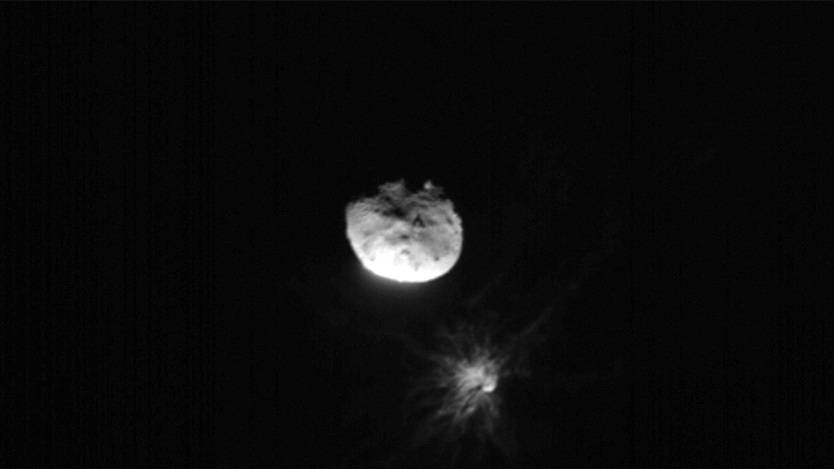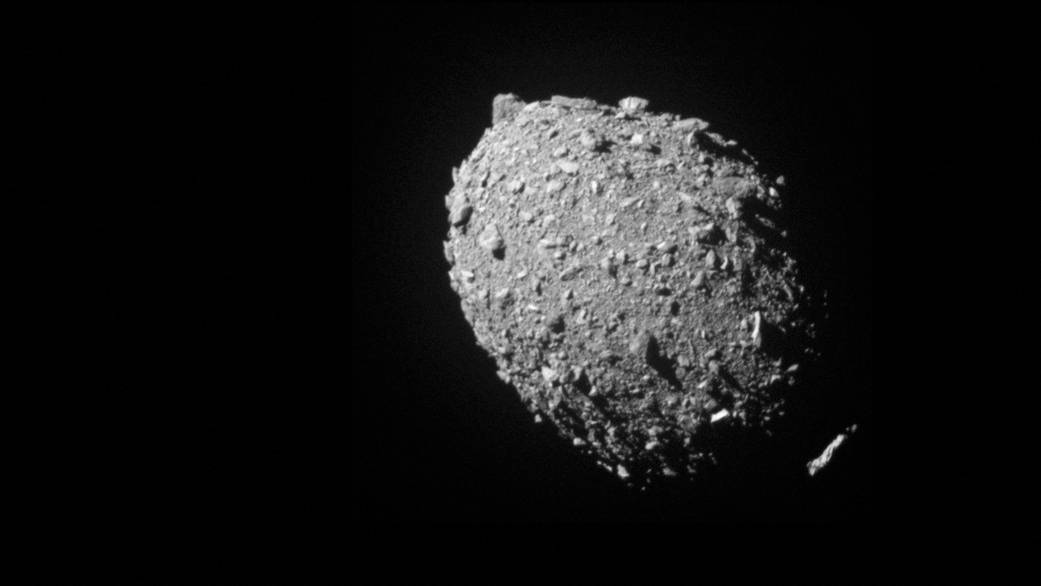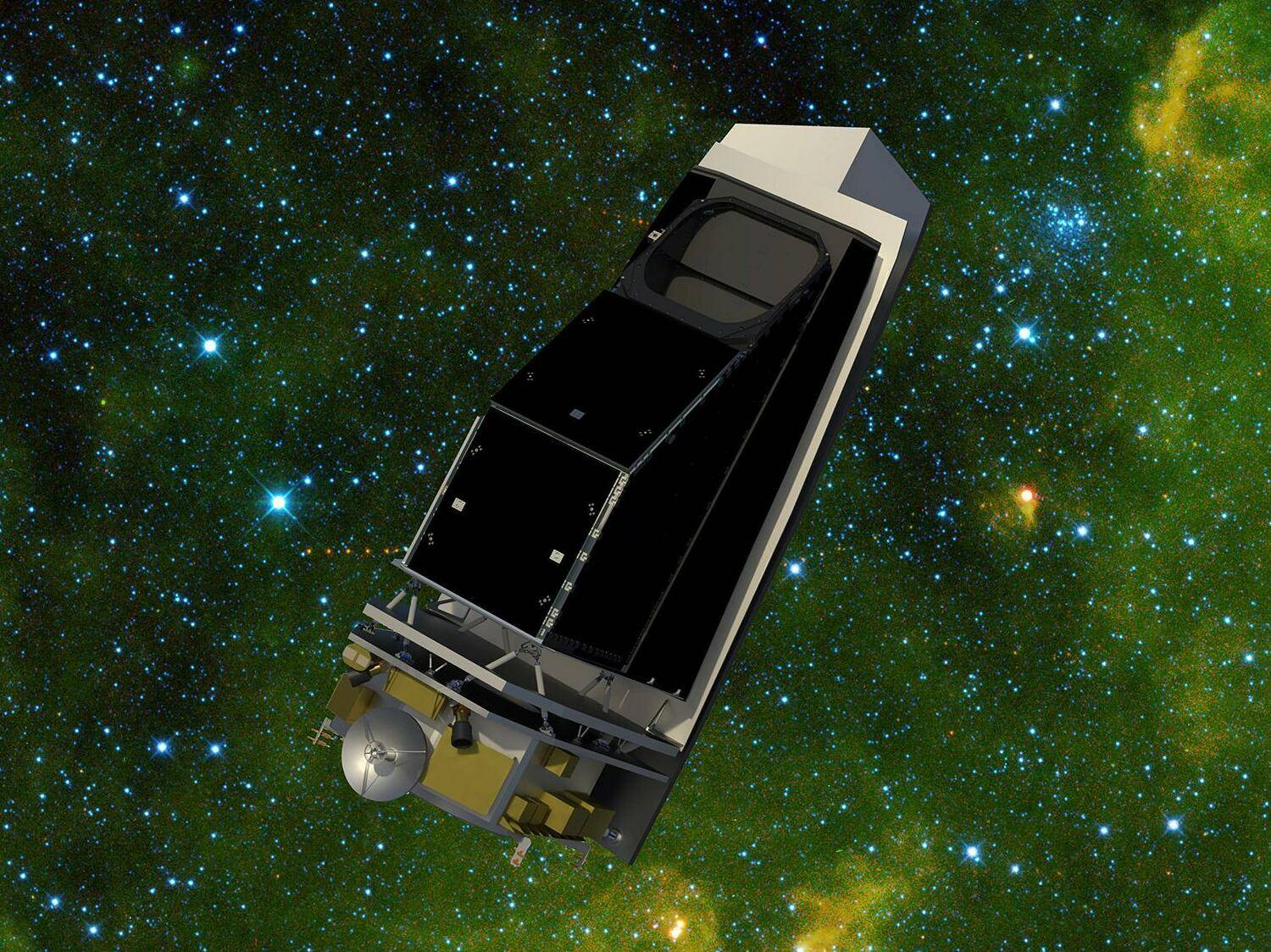
Last week an asteroid flew very close to Earth, but was only detected one week earlier, raising questions about Earth's preparedness. /ASI/NASA/Reuters
Last week an asteroid flew very close to Earth, but was only detected one week earlier, raising questions about Earth's preparedness. /ASI/NASA/Reuters
An asteroid the size of a small shipping truck flew by the Earth last week. That's not unusual, but what was worrying is that it flew completely under the radar of the world's major space agencies.
While the space rock, known as 2023 BU, posed no serious threat to humans, its passing has drawn attention to shortcomings in our ability to forecast meteors that could cause serious damage.
So why did NASA fail to spot the asteroid until so late, what happens if a larger space rock does start hurtling towards Earth and, most importantly, what are we doing to protect ourselves?
Why was the asteroid detected so late?
Scores of asteroids of a similar size to 2023 BU - an estimated 3.5 to 8.5 meters across - pass our planet each year. But this particular space rock came very near, flying by at just 3,600 kilometers above the southern tip of South America.
READ MORE
Why Italian police drive Lamborghinis
20 personalities that brought the world together
The Secret Betrayal: China's WWII sailors
Despite its relative close proximity, it was only picked a week ago by an amateur astronomer working from the Russian-occupied Crimean peninsula in Ukraine. Only then were major space agencies like NASA alerted to its presence.

A graphic showing the trajectory of asteroid 2023 BU. /Laurence Saubadu, Jonathan Walter/AFP
A graphic showing the trajectory of asteroid 2023 BU. /Laurence Saubadu, Jonathan Walter/AFP
Their observations showed 2023 BU would almost certainly miss Earth, even if it did fly through the area where the world's telecommunications satellites orbit, around 36,000km above the planet. But why did major space agencies initially fail to spot the asteroid?
Firstly, NASA has for years focused on detecting much bigger and more threatening asteroids than the 2023 BU. That's because if a space rock of a similar size were to head towards Earth, it would have broken up in the atmosphere.
But 2023 BU is on the smaller end of a size group that NASA tends to overlook until the last moment, asteroids that are 5-to-50 meters in diameter, which is as big as an Olympic swimming pool.
Objects like these are difficult to detect until they come much closer to Earth, making it hard to predict which one could hit a populated area. With current capabilities, astronomers can't see when such a rock might be coming towards Earth until just days before.
"We don't know where most of the asteroids are that can cause local to regional devastation," said Terik Daly, a planetary scientist at the Johns Hopkins Applied Physics Laboratory.
What happens if an asteroid hits earth and how likely is it?
If 2023 BU had entered the Earth's atmosphere, only small fragments would have possibly reached land, but it would have produced a fireball. However, larger asteroids - under the 50 meter diameter range that agencies can spot more easily - can do much more damage.
For comparison, the last time such a meteor, the name for asteroids once they enter our atmosphere, hit Earth was in 2013 over Chelyabinsk in Russia.
A once-every-100-years event, according to NASA's Jet Propulsion Laboratory, the impact of the near 20-meter-wide rock created a shockwave that shattered tens of thousands of windows and caused $33 million in damage. No one had seen it coming before it entered Earth's atmosphere.
In terms of the likelihood of such undetectable asteroids hitting Earth, NASA says a 5-meter rock is estimated to target Earth once a year, and a 50-meter rock once every thousand years.

If an asteroid the width of 10,000 meters hit the earth, it would cause mass extinction. /NASA/Johns Hopkins APL/Reuters
If an asteroid the width of 10,000 meters hit the earth, it would cause mass extinction. /NASA/Johns Hopkins APL/Reuters
For 1,000 meters-wide, its every 500,000 years. Only 900 are thought to have hit Earth, but they have the potential to make craters as wide as 10 kilometers and cause global devastation.
If an asteroid the width of 10,000 meters hit the Earth like the one that's thought to have killed the dinosaurs, it would cause mass extinction. That's thought to occur once every 100 to 200 million years.
The chance of asteroids that are smaller, around 140 meters wide, hitting Earth comes along around every 20,000 years. NASA keeps watch over such space rocks, but only about 40 percent of them are thought to have been spotted, allowing us to determine their risk.
If one were to hit Earth, it would be enough to create a 2 kilometer-wide crater, enough to devastate a city and cause mass casualties.
But instead of weighing the statistical possibilities of asteroids hitting Earth, some astronomers say agencies like NASA should be improving their ability to detect them.
"How many natural hazards are there that we could actually do something about and prevent for a billion dollars? There's not many," said Daly, whose work focuses on defending Earth from hazardous asteroids.
What are we doing to protect ourselves from Armageddon?
One improvement we will soon see in detecting such asteroids is NASA's incoming NEO Surveyor. The $1.2 billion telescope, which is still under development, will launch nearly 1.5 million kilometers from Earth with the specific purpose of looking for asteroids.
The technology will be far superior to other contemporary telescopes that are on Earth and are made weaker because of daytime light and Earth's atmosphere.
The new telescope is part of NASA's goal, mandated by Congress in 2005 to detect 90 percent of the total expected amount of asteroids bigger than 140 meters.

An illustration of the NEO Surveyor, NASA's next-generation near-Earth object hunter. /NASA/JPL-Caltech/University of Arizona/Wikicommons
An illustration of the NEO Surveyor, NASA's next-generation near-Earth object hunter. /NASA/JPL-Caltech/University of Arizona/Wikicommons
"With Surveyor, we're really focusing on finding the one asteroid that could cause a really bad day for a lot of people," said Amy Mainzer, NEO Surveyor principal investigator. "But we're also tasked with getting good statistics on the smaller objects, down to about the size of the Chelyabinsk object."
NASA was supposed to reach the 90 percent goal by 2020, but the agency proposed last year to cut the telescope's 2023 budget by three quarters and push its launch to 2028 "to support higher-priority missions."
Asteroid detection became more important on the world agenda last year after NASA successfully used a spacecraft to knock a space rock off its course.
It was the first time such a demonstration, called the Double Asteroid Redirection Test (DART), showed humans had a way to defend against potentially deadly incoming meteors.
"NEO Surveyor is of the utmost importance, especially now that we know from DART that we really can do something about it," Daly said. "So by golly, we gotta find these asteroids."
Source(s): Reuters